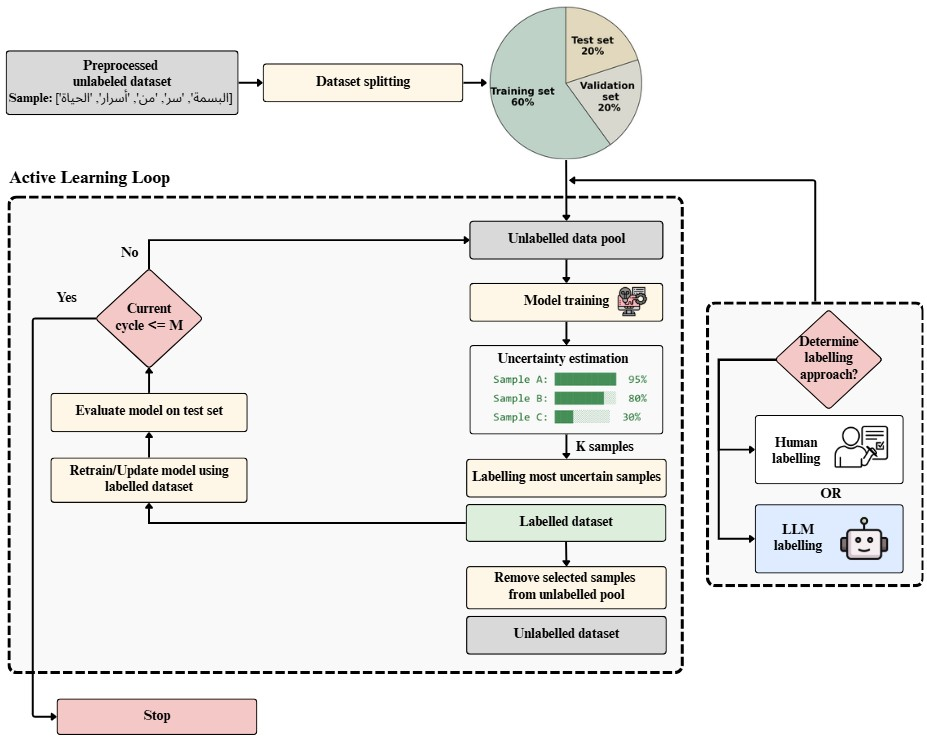From Human Annotation to Automation: LLM-in-the-Loop Active Learning for Arabic Sentiment Analysis (2509.23515v1)
Abstract: Natural language processing (NLP), particularly sentiment analysis, plays a vital role in areas like marketing, customer service, and social media monitoring by providing insights into user opinions and emotions. However, progress in Arabic sentiment analysis remains limited due to the lack of large, high-quality labeled datasets. While active learning has proven effective in reducing annotation efforts in other languages, few studies have explored it in Arabic sentiment tasks. Likewise, the use of LLMs for assisting annotation and comparing their performance to human labeling is still largely unexplored in the Arabic context. In this paper, we propose an active learning framework for Arabic sentiment analysis designed to reduce annotation costs while maintaining high performance. We evaluate multiple deep learning architectures: Specifically, long short-term memory (LSTM), gated recurrent units (GRU), and recurrent neural networks (RNN), across three benchmark datasets: Hunger Station, AJGT, and MASAC, encompassing both modern standard Arabic and dialectal variations. Additionally, two annotation strategies are compared: Human labeling and LLM-assisted labeling. Five LLMs are evaluated as annotators: GPT-4o, Claude 3 Sonnet, Gemini 2.5 Pro, DeepSeek Chat, and LLaMA 3 70B Instruct. For each dataset, the best-performing LLM was used: GPT-4o for Hunger Station, Claude 3 Sonnet for AJGT, and DeepSeek Chat for MASAC. Our results show that LLM-assisted active learning achieves competitive or superior performance compared to human labeling. For example, on the Hunger Station dataset, the LSTM model achieved 93% accuracy with only 450 labeled samples using GPT-4o-generated labels, while on the MASAC dataset, DeepSeek Chat reached 82% accuracy with 650 labeled samples, matching the accuracy obtained through human labeling.
Sponsored by Paperpile, the PDF & BibTeX manager trusted by top AI labs.
Get 30 days freePaper Prompts
Sign up for free to create and run prompts on this paper using GPT-5.
Top Community Prompts
Collections
Sign up for free to add this paper to one or more collections.

